What is the current currency in Spain? As in most EU countries, the country uses euros. This currency has been introduced (non-cash) since the beginning of 1999, and since 2002 coins and banknotes appeared. Now in the 19 countries that make up the eurozone, the euro is recognized as the official currency. In addition to Spain, these countries include Germany, France, Italy, Portugal, Greece and others.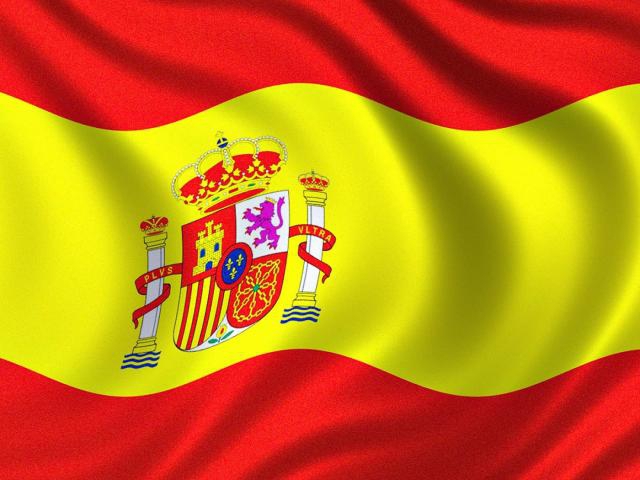
Single european currency
The euro contains one hundred cents, also called eurocents. Paper money in all countries of the eurozone look the same. But the coins vary depending on the issuing countries: one side is common (reverse) - on it, against the background of a schematic map of Europe, the denomination of the banknote is indicated; the other - “national” (obverse), contains the image that this or that country has chosen. It is worth saying that the current currency of Spain can be used in any country in the eurozone.
Spanish coin obverse
Metal banknotes in denominations of one, two, five cents on one side are decorated with an image of the main facade of the Cathedral of St. James, located in Santiago de Compostela. This cathedral is a shrine and pilgrimage center for Christians around the world.
Coins in denominations of ten, twenty, fifty cents contain an image of the author of the famous novel about Don Quixote - writer Miguel Cervantes.
One and two euro denominations of metal show a portrait of the former King of Spain, Juan Carlos the First. In 2015, coins of this denomination began to be issued with the image of the new ruler of the country - Felipe the Sixth, who is the son of Juan Carlos the First.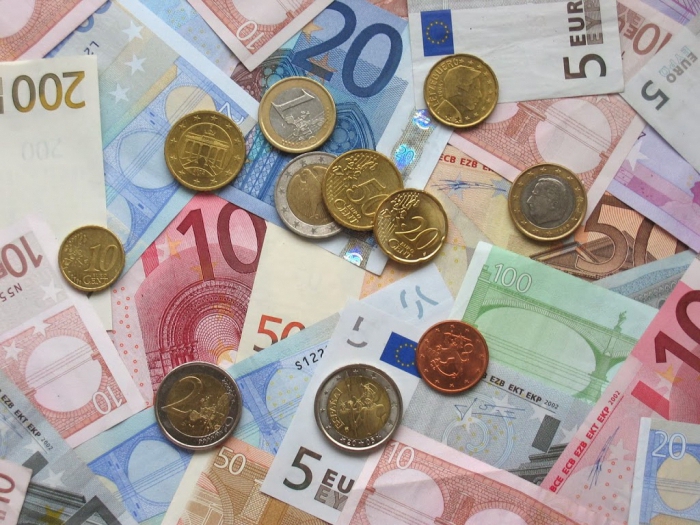
Special coins
Now in a limited amount of money there are commemorative metal banknotes with a face value of two euros. There are so far seven varieties of such coins in Spain.
- 2005 - the first commemorative coin was issued, which was dedicated to the release of the 1st edition of Cervantes's novel about the adventures of Don Quixote.
- 2007 - another commemorative metal banknote was issued in honor of the fiftieth anniversary of the Rome Treaty, which marked the elimination of any obstacles between Belgium, Italy, Germany, Luxembourg, France and the Netherlands on the free movement of services, goods, capital and people. In fact, this treaty was the starting point for the formation of the European Union.
- 2009 - a two-euro commemorative coin was issued, dedicated to the decade since the creation of the Economic and Monetary Union in Europe, which has become the legal basis for the introduction of such a currency as the euro.
- 2010 - a coin dedicated to the historical center of Cordoba.
- 2011 - Banknote in honor of the Alhambra, Generalife and Albasin in Granada.
- 2012 - Coin dedicated to the cathedral located in Burgos.
- 2013 - commemorative two euros with the image of the Escorial monastery.
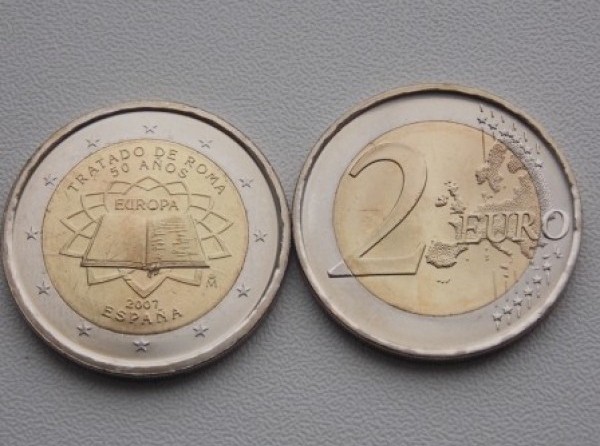
Spain currency to euro
Before the introduction of the single European currency in the country, the peseta was in circulation. Even earlier, escudo and reals were the official money of Spain. We will tell you more about them.
Real
This currency of Spain was the main one in the state for many centuries - from the middle of the fourteenth century until 1864, when it was replaced by an escudo. King of Castile Pedro the First introduced the real as a standard coin, which was equivalent to three Maravedi - these are ancient Iberian gold and silver coins. Eight reais were equated with a silver peso, which was also called the dollar. It also began to be issued as a separate banknote. Minted Spanish coins can be found in all markets of the world, especially in America and Asia.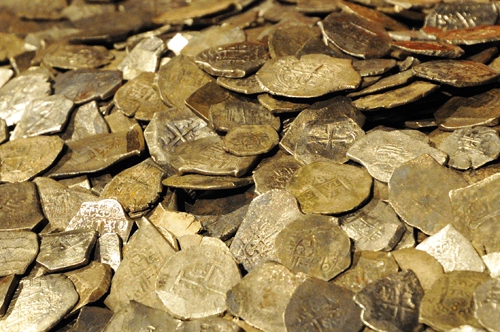
Escudo
In 1864, Spain switched to new money.The country's currency was now called escudo. This name refers to two types of coins - from silver and gold. It must be said that the first golden escudo was minted as early as 1566, and the last in 1833. Silver coins were minted from 1864 until that time, until they were replaced by a new monetary symbol - peseta. At a certain stage, each escudo cost a predetermined number of reals, which we spoke about earlier.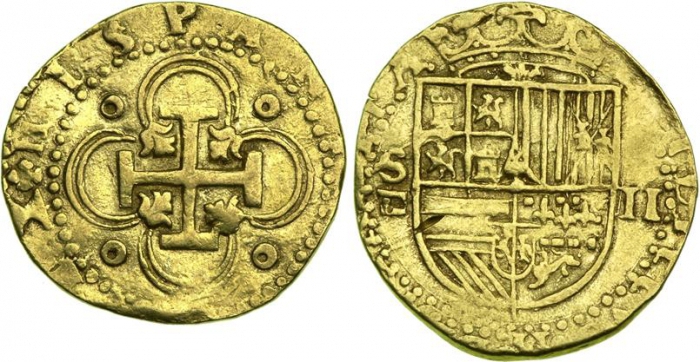
Peseta
This is the official currency of Spain to the euro, used throughout the country from 1869 to 2002. The name comes from the word "peceta", which is translated from Catalan means "a small piece." In the fifteenth century, silver coins were called pesetas, and in the times of the Middle Ages they so signified the value of two reals.
In 1868, in October, a decree was issued establishing what currency in Spain, starting in 1869, will be official. Peseta was made the national monetary unit in the name of facilitating trade, strengthening the economy and establishing a stable financial system. At the same time, Spain entered the Latin Monetary Union, the purpose of which was to unify several monetary systems in Europe. The states participating in this union have agreed that their currencies will be converted to a bimetallic standard with a clearly fixed ratio of gold and silver.
The first banknotes of various denominations were printed on July 1, 1874 in a series of two million units. They were available only to financial institutions. Subsequently, banknotes in denominations of 25, 50, 100, 500, 1000 pesetas were issued until 1935, until the devaluation and the cost of silver increased, which led to the fact that coins of five pesetas began to be sold at a higher price as precious metal. As a result, the Spanish government retired these coins from circulation and put into circulation five and ten pesetas banknotes.
During the civil war, the state’s economy fell into decay, and with it the Spanish currency. Banknotes in denominations of 50 centimos, 1, 2 pesetas were printed, since it was not possible to buy metal for minting coins. In 1974, there were approximately seven hundred million such banknotes in circulation, and in 1978, more than a billion. Since the banknote of 1000 pesetas remained the largest banknote, the Spaniards had to carry a pile of paper with them to make a serious purchase. This led to the fact that starting in the 1970s, banknotes of small denominations began to be withdrawn from circulation. And in 1976, a banknote of 5000 pesetas was first issued.
In the penultimate series of banknotes from 1979, a certain color corresponded to the money of each denomination. In the 1980s, 2,000 and 5,000 pesetas banknotes were added to the series. Since 1982, the country stopped printing banknotes with denominations of less than 500 pesetas, and in 1987, coins with a face value of 200 and 500 pesetas appeared instead of similar paper money.
The last series was released in 1992 and consisted of banknotes of 1,000, 2,000, 5,000, 10,000 pesetas. Banknotes of the previous series were withdrawn from circulation in 1997. From this time until 2002, when the euro was introduced, the currency of Spain consisted of only the above four banknotes (not counting coins).
By the way, those who have littered pesetas today can exchange them for euros. The former currency of Spain is accepted at the country's central bank. The Spaniards themselves really liked the pesetas, and still many people of the older generation translate prices into them. The former currency of Spain has not been forgotten to this day. So, in Estepona, a monument was erected to her, and in some shops in the country price tags in pesetas are indicated in small print on price tags.
What currency is preferred for tourists in Spain
Before arriving in this amazing state, it is recommended to exchange money for euros. But it doesn’t matter if you haven’t done this: in Spain, you can exchange money at every step: in hotels, exchange offices, travel agencies and tour guides. But, of course, the best rate is offered at banks, although it is worth considering that a commission may be charged for the service.Almost all bank branches have ATMs. Using them, you can cash out money from an international credit card at any time.
